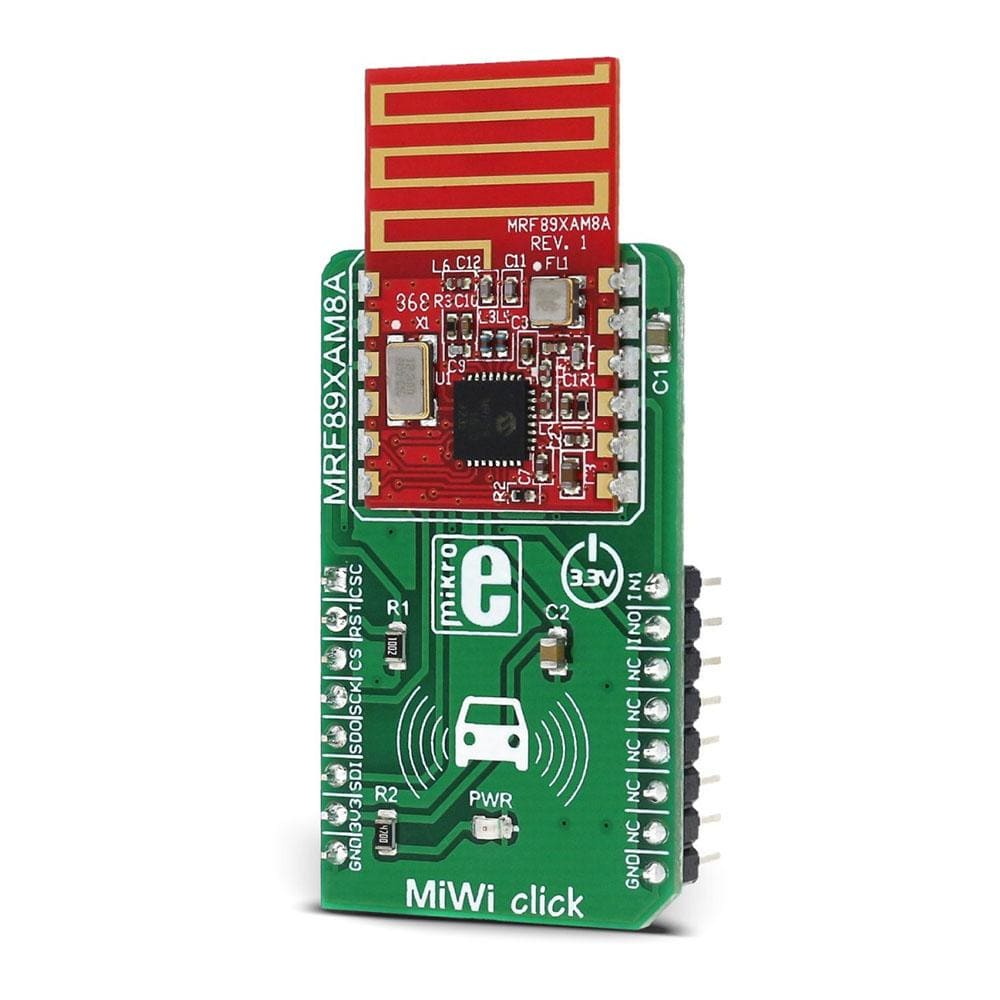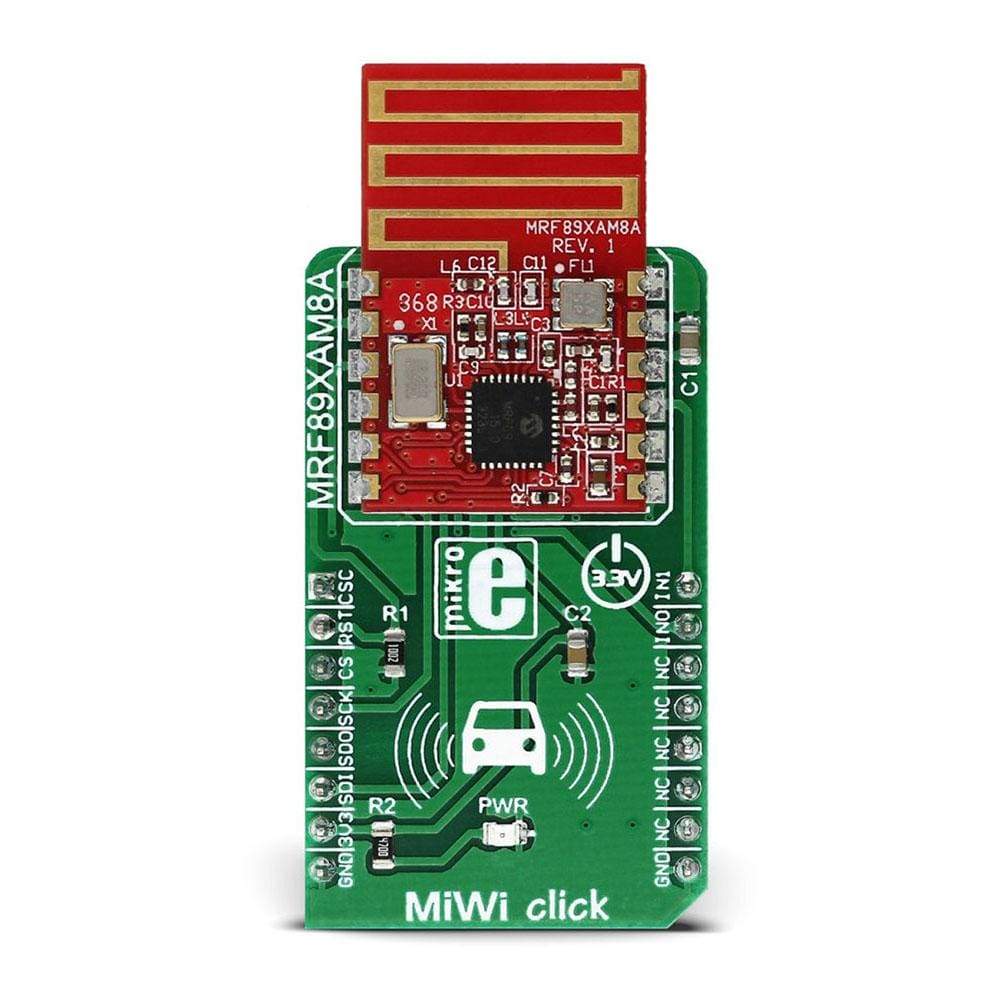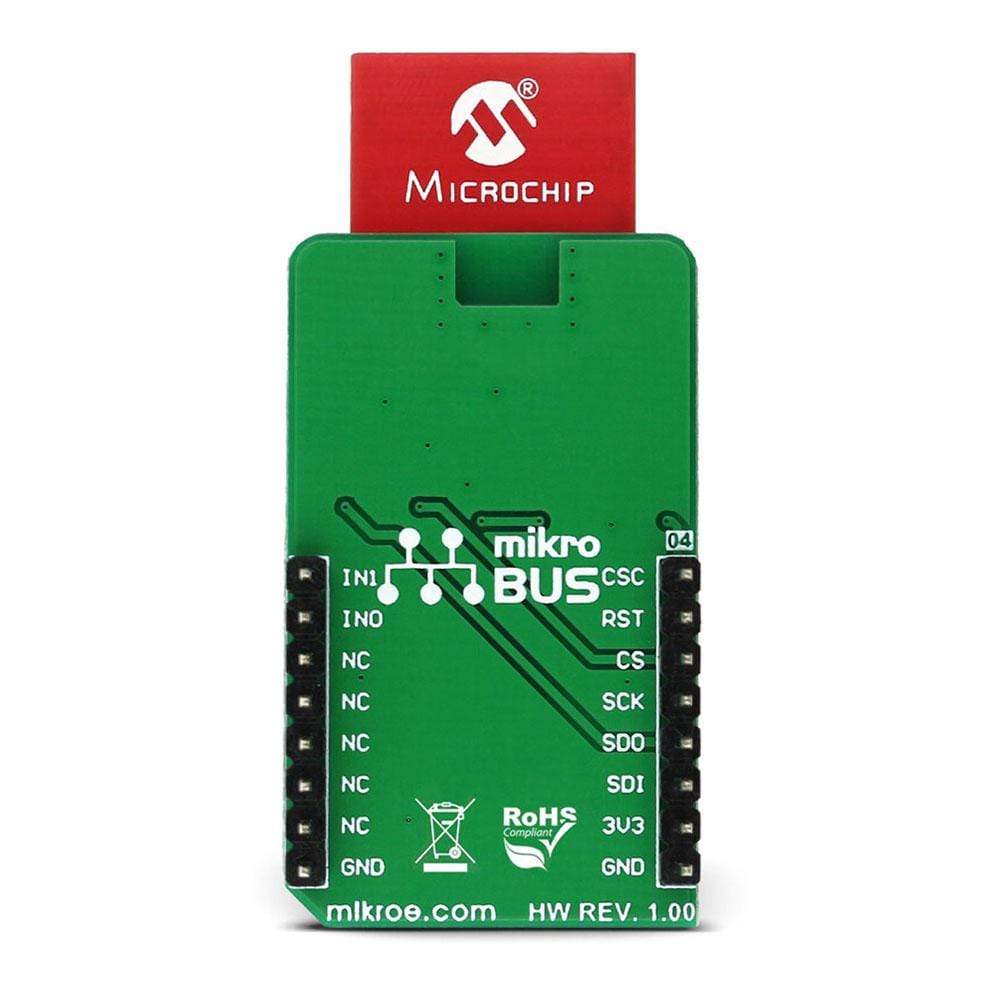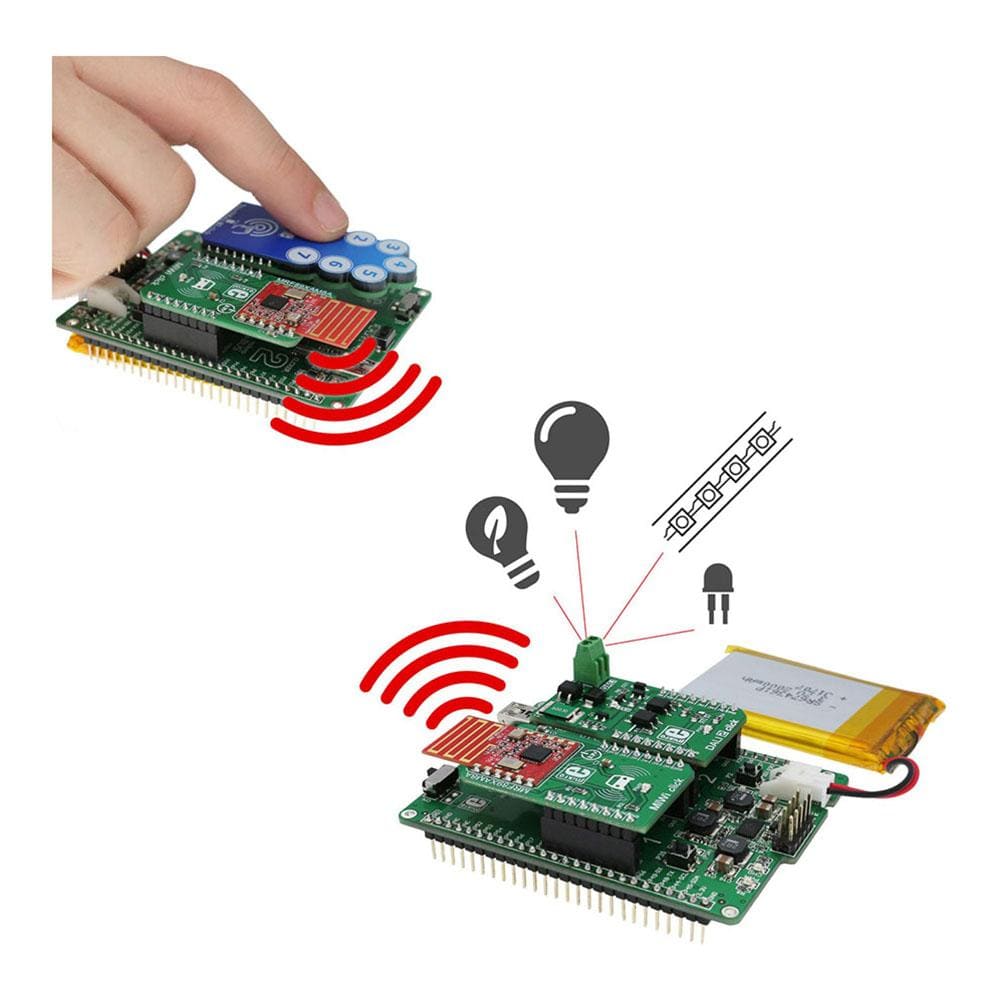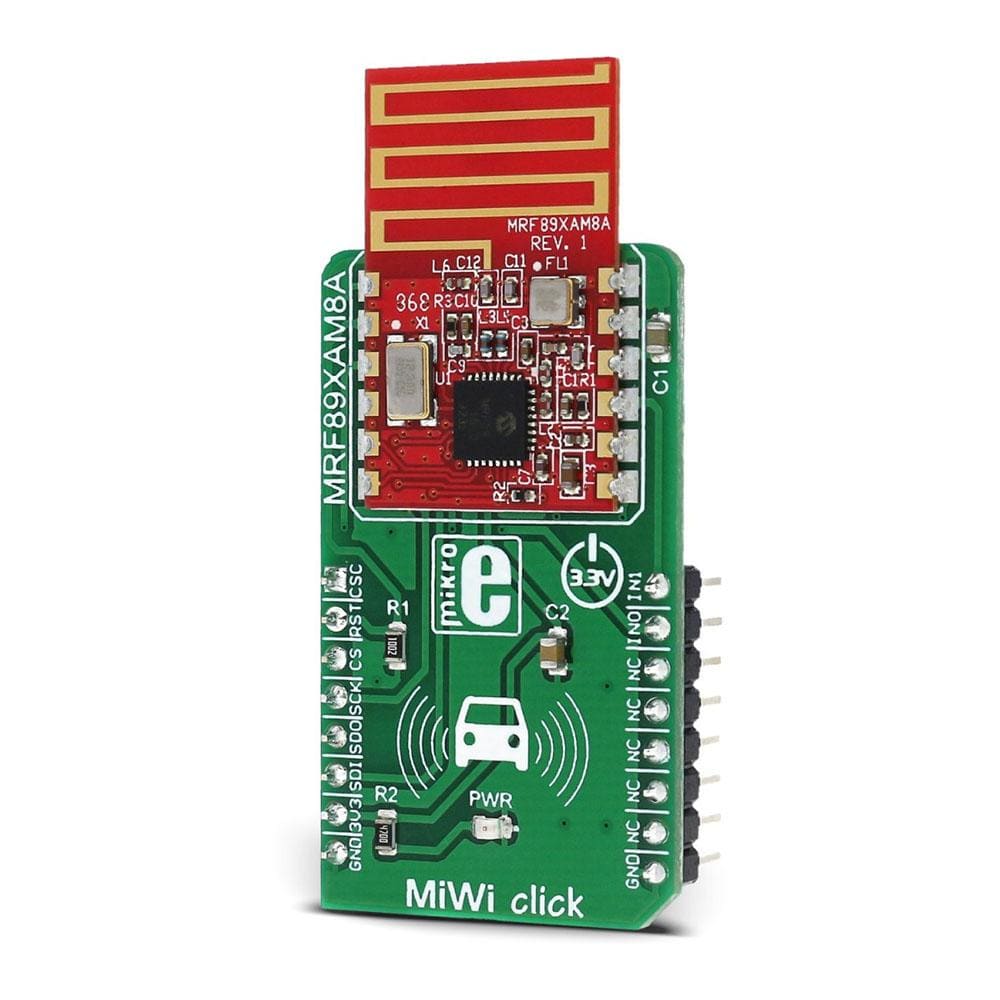
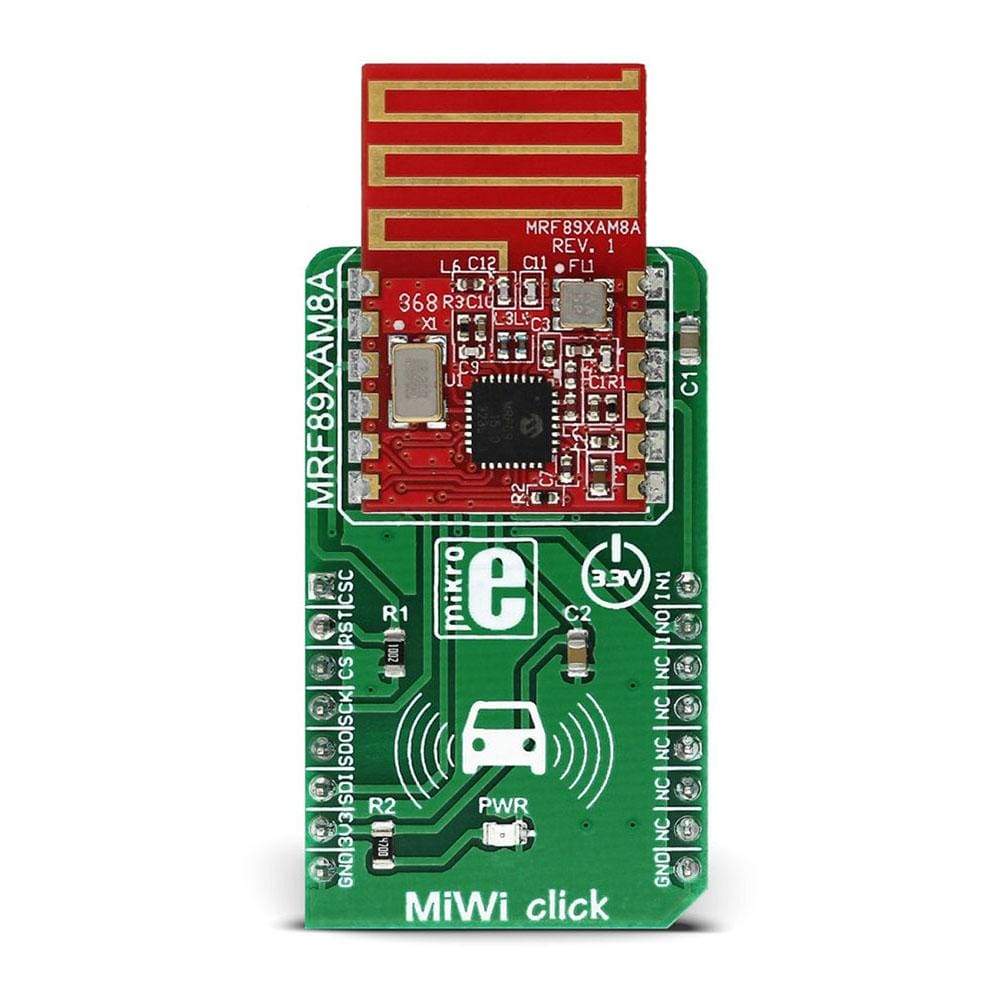
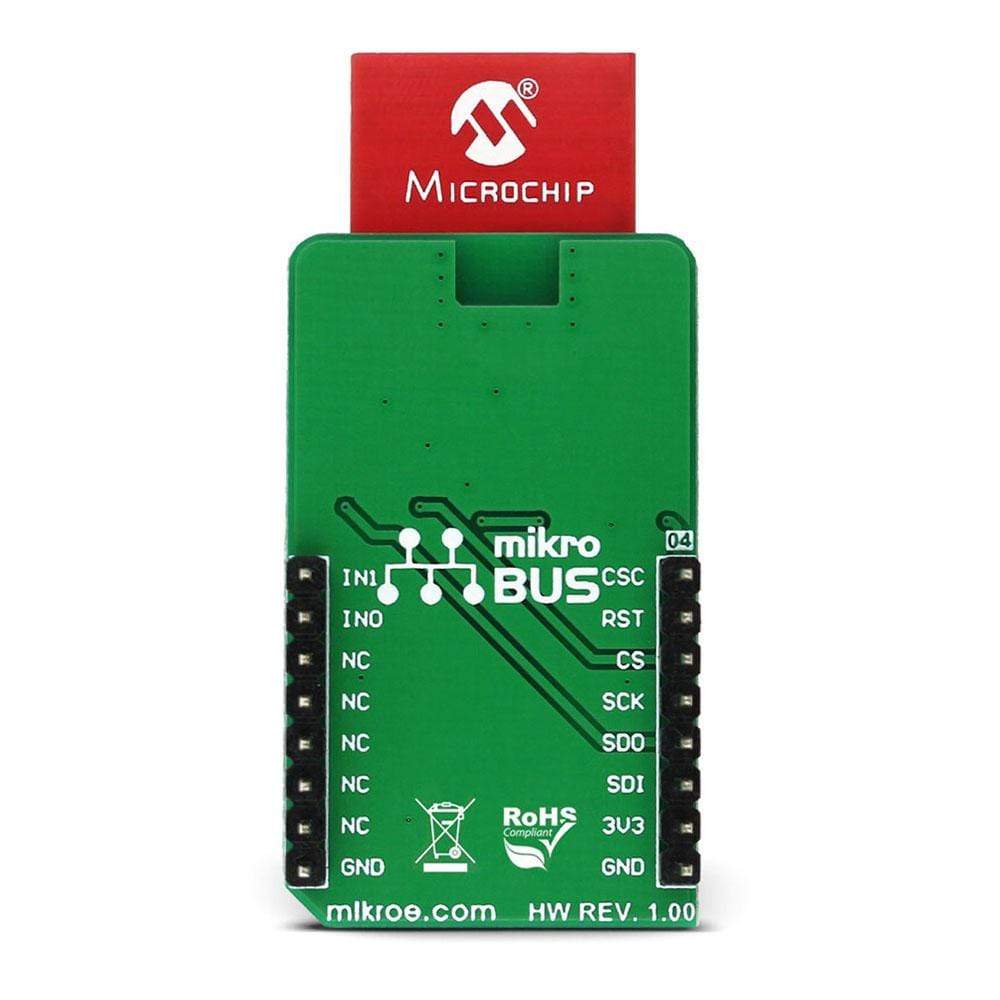
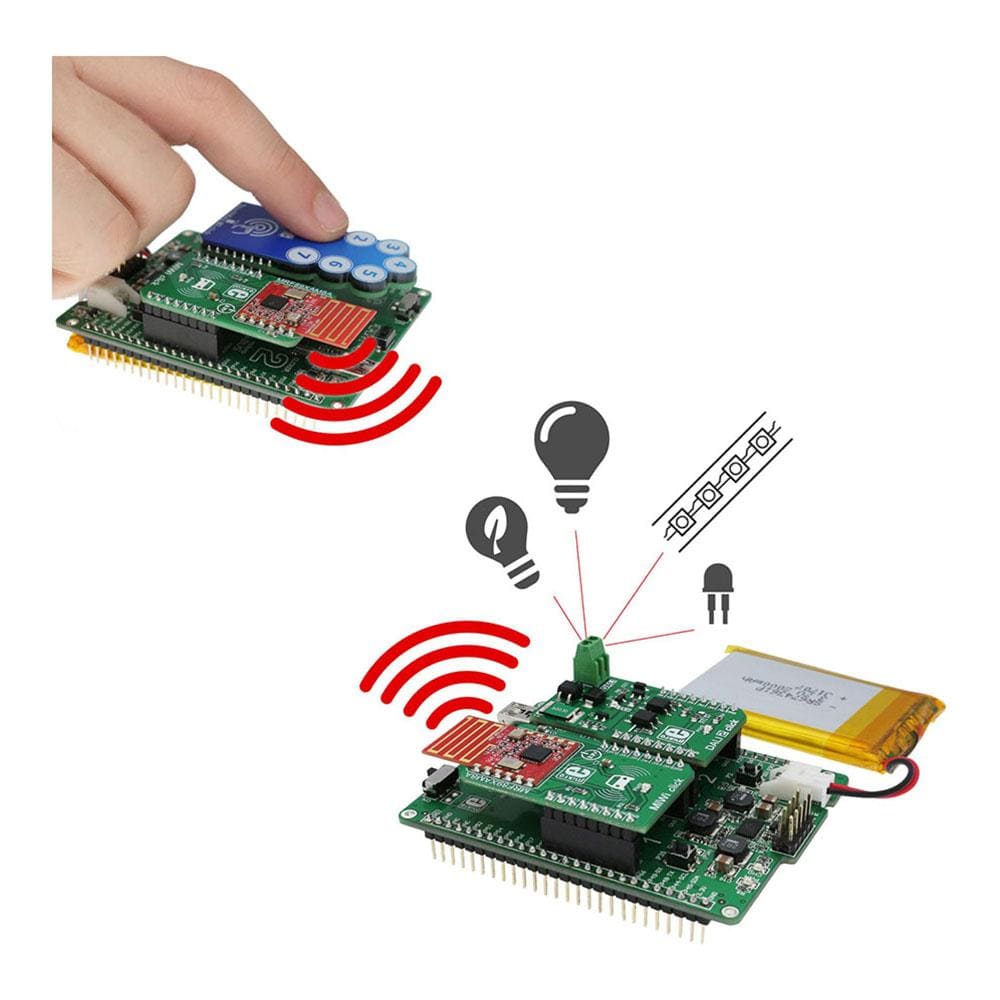
Overview
The MiWi Click Board™ is a sub-gigahertz radio transceiver Click Board™, which offers a reliable FSK or OOK communication solution, with the maximum data rates of 40kbps and 16kbps, respectively. The radio transceiver module used on this Click Board™ has plenty of features that make it a perfect choice for compact designs: It has very good reception sensitivity, an onboard PCB antenna, a high level of components integration, built-in packet handling routines with automatic CRC generation, 64 bytes of transmit/receive FIFO buffer, built-in Sync Word recognition, clock/data synchronisation and recovery and many more.
Downloads
Le MiWi Click Board™ est un émetteur-récepteur radio sub-gigahertz Click Board™, qui offre une solution de communication FSK ou OOK fiable, avec des débits de données maximum de 40 kbps et 16 kbps, respectivement. Le module émetteur-récepteur radio utilisé sur ce Click Board™ possède de nombreuses fonctionnalités qui en font un choix parfait pour les conceptions compactes : il dispose d'une très bonne sensibilité de réception, d'une antenne PCB intégrée, d'un haut niveau d'intégration des composants, de routines de traitement de paquets intégrées avec génération automatique de CRC, d'un tampon FIFO de transmission/réception de 64 octets, d'une reconnaissance Sync Word intégrée, d'une synchronisation et d'une récupération d'horloge/données et bien plus encore.
| General Information | |
|---|---|
Part Number (SKU) |
MIKROE-2924
|
Manufacturer |
|
| Physical and Mechanical | |
Weight |
0.019 kg
|
| Other | |
Country of Origin |
|
HS Code Customs Tariff code
|
|
EAN |
8606018712502
|
Warranty |
|
Frequently Asked Questions
Have a Question?
Be the first to ask a question about this.

